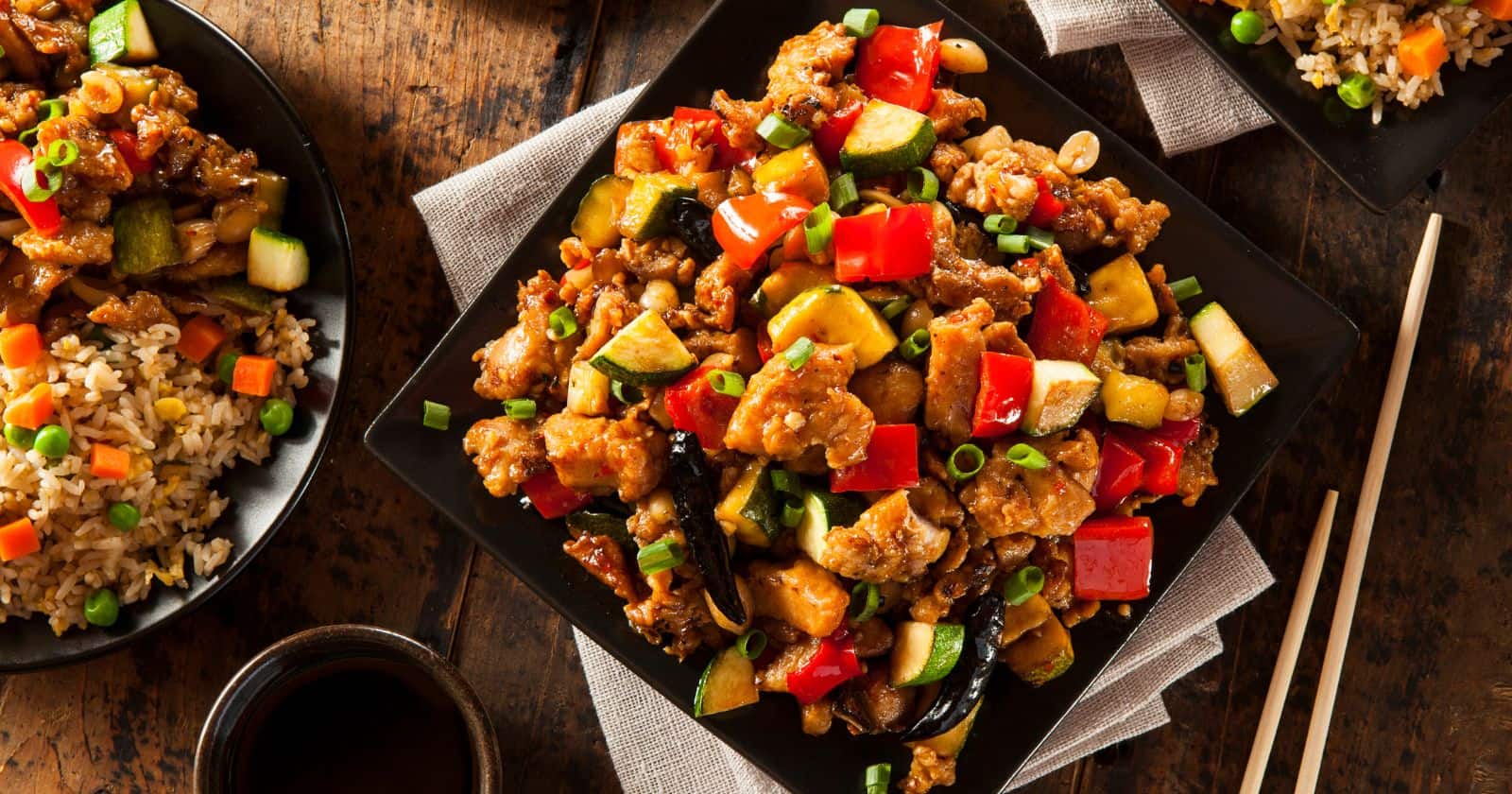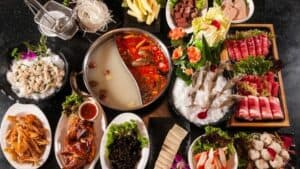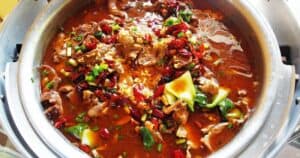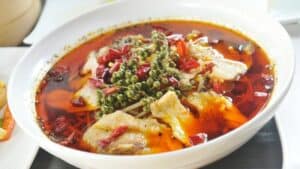With its explosive mix of chili peppers and tongue-tingling Sichuan peppercorns, Kung Pao chicken is one of the spicier Chinese restaurant staples. But just how hot is this takeout favorite?
While some recipes scorch, Kung Pao chicken’s heat is customizable once you understand the key seasonings. Read on to learn how to adjust this dish to your preferred
Kung Pao Chicken’s Spicy Ingredients
To create Kung Pao’s signature ma la flavor profile (ma for numbing and la for spicy), these fiery ingredients are typical:
- Dried red chili peppers – The central heat element. Using less reduces spiciness.
- Sichuan peppercorns – Create a numbing effect on the tongue. Moderating the amount tones down tingling.
- Chili oil/sauce – Adds a punch of chili flavor. Omit or use less for milder results.
- Chili garlic sauce – Provides heat and pungency. Substitute regular garlic sauce instead.
Beyond the chilies, these components also contribute kick:
- Ginger – Has warming, spicy undertones.
- Green onions – Onion pungency enhances chili bite.
So by simply tweaking the quantities of the main spicy seasonings, you can dial Kung Pao’s heat up or down significantly.
Adjusting Chili Peppers for Desired Spice
Let’s focus first on managing the dried red chilies, as they offer the biggest heat impact.
For mild
- Use milder dried peppers like ancho, New Mexico, or guajillo rather than very hot varieties.
- Remove chili seeds and membranes for less heat.
- Soak peppers in hot water which mellows their punch. Start with around 3 peppers.
For medium
- Use moderately hot chilies like Arbol or Japonés. Keep some seeds.
- Add 5-8 dried peppers, adjusted to taste.
- Quick-fry peppers in oil rather than soaking to preserve more heat.
For extra-spicy:
- Opt for tiny fiery chilies like Thai bird’s eye peppers.
- Use extra seeds and keep membranes intact.
- Toast peppers in dry pan to intensify pungency.
- Generously add 10+ dried peppers.
The beauty of Kung Pao is that you can precisely control chili heat by changing the pepper quantity and prep method.
Balancing Sichuan Peppercorn Numbing Spice
In addition to chili burn, Sichuan peppercorns create Kung Pao’s buzzy mouthfeel. Follow these tips to manage that numbing tingle:
For less tongue-numbing:
- Start with 1⁄4 teaspoon Sichuan peppercorns and adjust up.
- Briefly toast peppercorns to mellow potency.
- Remove peppercorns before serving for just residual tingling.
For moderate numbness:
- Use 1⁄2 to 3⁄4 teaspoon peppercorns.
- Partially crush peppercorns to limit piquancy.
For intense tingling/numbness:
- Add up to 2 teaspoons Sichuan peppercorns.
- Coarsely crush peppercorns before cooking to maximize effect.
- Leave peppercorns whole in the finished dish.
The Sichuan peppercorn quantity provides another great way to fine-tune Kung Pao’s signature mouthfeel and moderate the ma la heat complexity.
Handling Chili Oils and Sauces
To further calibrate the burn, use added chili oils and sauces judiciously:
- For milder Kung Pao, omit chili oil/sauce or use a tiny pinch.
- For moderate heat, add 1⁄4 to 1⁄2 teaspoon chili oil or sauce.
- Generously add chili products for extra sizzle – up to 2 teaspoons.
When harnessing the many spicy components of Kung Pao chicken, restraint brings mildness while free reign spices things up.
Kung Pao Your Way
Part of the fun of Kung Pao chicken is customizing the heat level just the way you like it.
Once you understand the key fiery ingredients, it’s easy to create a version tailored to your specific
Gotta-have-it-hot types can amp up the chilies, peppercorns and oils. Those who prefer mild can tone it down. And you can always adjust a recipe the next time if it’s over or under your ideal scoville rating.
So grab your preferred dried red chilies and Sichuan peppercorns and put your unique stamp on this Chinese takeout classic. The possibilities for Kung Pao creativity are endless!
Just be sure to serve it with a nice cooling rice or noodles on the side. Because no matter how you kung pao it, this dish is gonna bring some serious
Frequently Asked Questions
1. What type of dried chili peppers work best for mild kung pao chicken?
Ancho, guajillo, and New Mexico are good milder dried chilies. Remove seeds and soak in water to further reduce heat.
2. Is kung pao chicken spicy for kids?
It can be adapted to be kid-friendly. Use minimal dried chilies, skip Sichuan peppercorns, and omit chili oils/sauces. Adjust to taste.
3. What can I serve with kung pao chicken to help tame the
Rice, noodles, and steamed veggies help neutralize heat. Dairy like yogurt or milk helps too. Sweet dishes also complement the
4. I’m pregnant but craving kung pao chicken. How can I satisfy the craving safely?
Use very mild pepper varieties with no seeds. Skip Sichuan peppercorns and chili oils. Start with small amounts of chilies and adjust up cautiously.
5. My kung pao chicken came out too spicy. How can I fix it?
Stir in a cornstarch slurry to mellow heat by diluting the chili oils. Add extra sauce ingredients like broth, vinegar, sugar. Serve over rice to soak up excess





